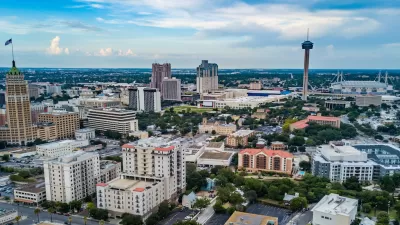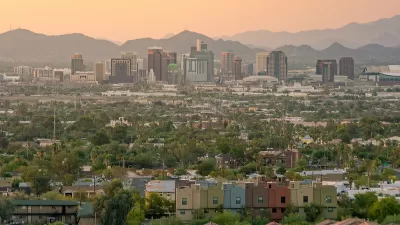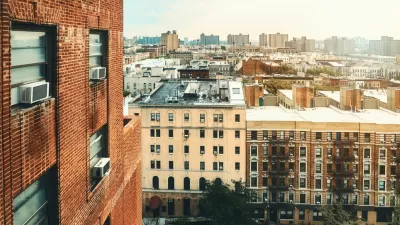The country’s economic pie is sliced up differently now as growth in metropolitan areas involves either income or population increases—but not both.

Jed Kolko takes a closer look at geographic inequality in the United States and says the picture is more complicated than just high per-person income concentrated in certain metropolitan areas.
The income gap has increased between rich and poor areas, but the dominance of a small group of places with high total income levels has decreased over time. "In fact, economic activity — as measured by total income — is less concentrated in a handful of top metro areas today than it has been during most of the past half-century," says Kolko.
In addition, metros where income is rising are not the same places where populations are increasing, he notes. “In other words, in almost all cases, economically successful places in America have gotten bigger or richer but not both.”
In rich places, the lack of population growth is due largely to a lack of housing and high costs, which push out households unable to take on the financial burdens. "But these constraints in rich places may also help spread the wealth, by shifting growth to a wider set of more affordable places where a lower cost of living more than offsets lower salaries for most occupations," writes Kolko.
FULL STORY: Yes, Rich Cities Are Getting Richer. But That’s Not the Whole Story.

Alabama: Trump Terminates Settlements for Black Communities Harmed By Raw Sewage
Trump deemed the landmark civil rights agreement “illegal DEI and environmental justice policy.”

Planetizen Federal Action Tracker
A weekly monitor of how Trump’s orders and actions are impacting planners and planning in America.

The 120 Year Old Tiny Home Villages That Sheltered San Francisco’s Earthquake Refugees
More than a century ago, San Francisco mobilized to house thousands of residents displaced by the 1906 earthquake. Could their strategy offer a model for the present?

In Both Crashes and Crime, Public Transportation is Far Safer than Driving
Contrary to popular assumptions, public transportation has far lower crash and crime rates than automobile travel. For safer communities, improve and encourage transit travel.

Report: Zoning Reforms Should Complement Nashville’s Ambitious Transit Plan
Without reform, restrictive zoning codes will limit the impact of the city’s planned transit expansion and could exclude some of the residents who depend on transit the most.

Judge Orders Release of Frozen IRA, IIJA Funding
The decision is a victory for environmental groups who charged that freezing funds for critical infrastructure and disaster response programs caused “real and irreparable harm” to communities.
Urban Design for Planners 1: Software Tools
This six-course series explores essential urban design concepts using open source software and equips planners with the tools they need to participate fully in the urban design process.
Planning for Universal Design
Learn the tools for implementing Universal Design in planning regulations.
Clanton & Associates, Inc.
Jessamine County Fiscal Court
Institute for Housing and Urban Development Studies (IHS)
City of Grandview
Harvard GSD Executive Education
Toledo-Lucas County Plan Commissions
Salt Lake City
NYU Wagner Graduate School of Public Service





























